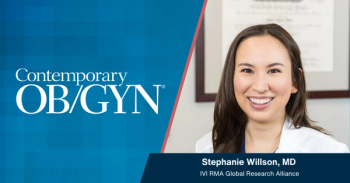
Does Assisted Conception Lead to Increased Risk of Preeclampsia?
As infertility rates have increased, now affecting as many as 12% of the reproductive age population, so has the use of assisted conception. For instance, in vitro fertilization was employed in about 1% of all live births in the United States.
As infertility rates have increased, now affecting as many as 12% of the reproductive age population, so has the use of assisted conception. In vitro fertilization is employed in about 1% of all live births in the United States, double what it was a decade ago. Since a predominant theory is that preeclampsia stems from events related to placentation, researchers hypothesized that women undergoing assisted conception would be more likely to experience preeclampsia.
To study this association, Dr Kathryn C. Calhoun, from the University of North Carolina at Chapel Hill, and colleagues conducted a secondary analysis of patients enrolled in the Preeclampsia: Mechanisms and Consequences study, a case-control study. Cases (N=440) were identified upon admission to labor and delivery if they had gestational hypertension or preeclampsia; controls (N=591) consisted of women presenting for delivery at term (≥37 weeks). Controls were frequency matched for race (African American versus other) and were prospectively enrolled. Cases were more likely to be African American and primiparous, carry multiple gestations, and have a history of chronic hypertension as well as a previous history of preeclampsia.
In their unadjusted analysis, Calhoun et al. found that women with preeclampsia had 1.4 times higher odds of having had an assisted conception as compared to their control counterparts. After controlling for age and race, the odds increased to more than double.
In women with preeclampsia, those who received assisted conception were more likely to be older, non-African American, and to be carrying multiple gestations. Furthermore, in comparing disease phenotype between the two groups, they found severe preeclampsia (ie, proteinuria and laboratory findings consistent with the end-organ damage associated with HELLP syndrome) in all patients who received assisted conception.
“While the majority of children conceived with medical assistance are born healthy after an uncomplicated pregnancy, this paper presents novel information regarding the association between assisted conception and altered maternal and perinatal outcomes, in that a more severe phenotype, with suggestion of end-organ damage, was seen in assisted conceptions,” Calhoun and colleagues concluded. “Women seeking fertility treatments should be counseled that these risks exist and that increased surveillance in the third trimester may be warranted.”
Add your comments below.
References:
Reference:
Calhoun KC, Barnhart KT, Elovitz MA, Srinivas SK. Evaluating the association between assisted conception and the severity of preeclampsia. ISRN Obstet Gynecol. 2011; 928592 [Epub].
Newsletter
Get the latest clinical updates, case studies, and expert commentary in obstetric and gynecologic care. Sign up now to stay informed.
















